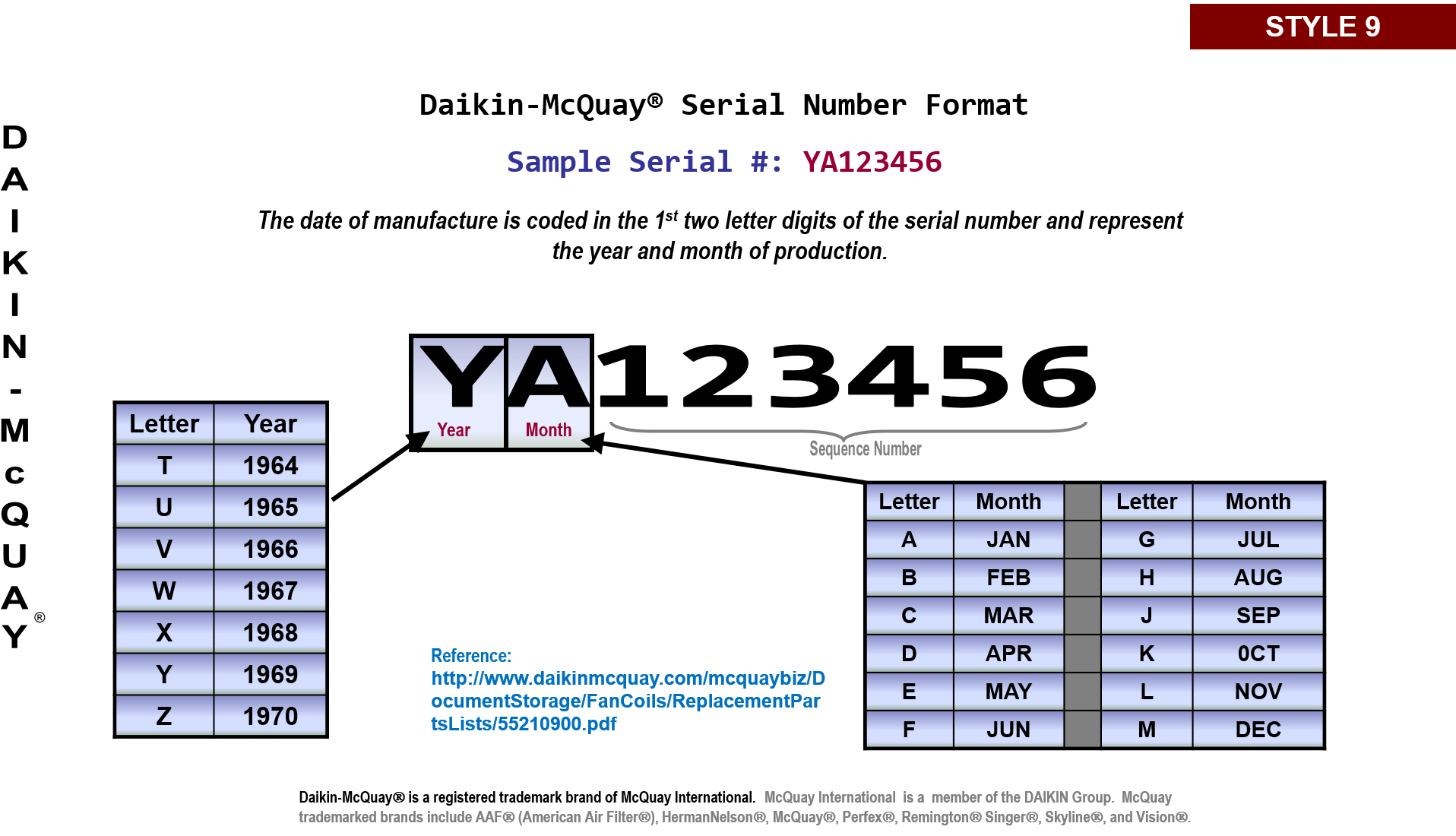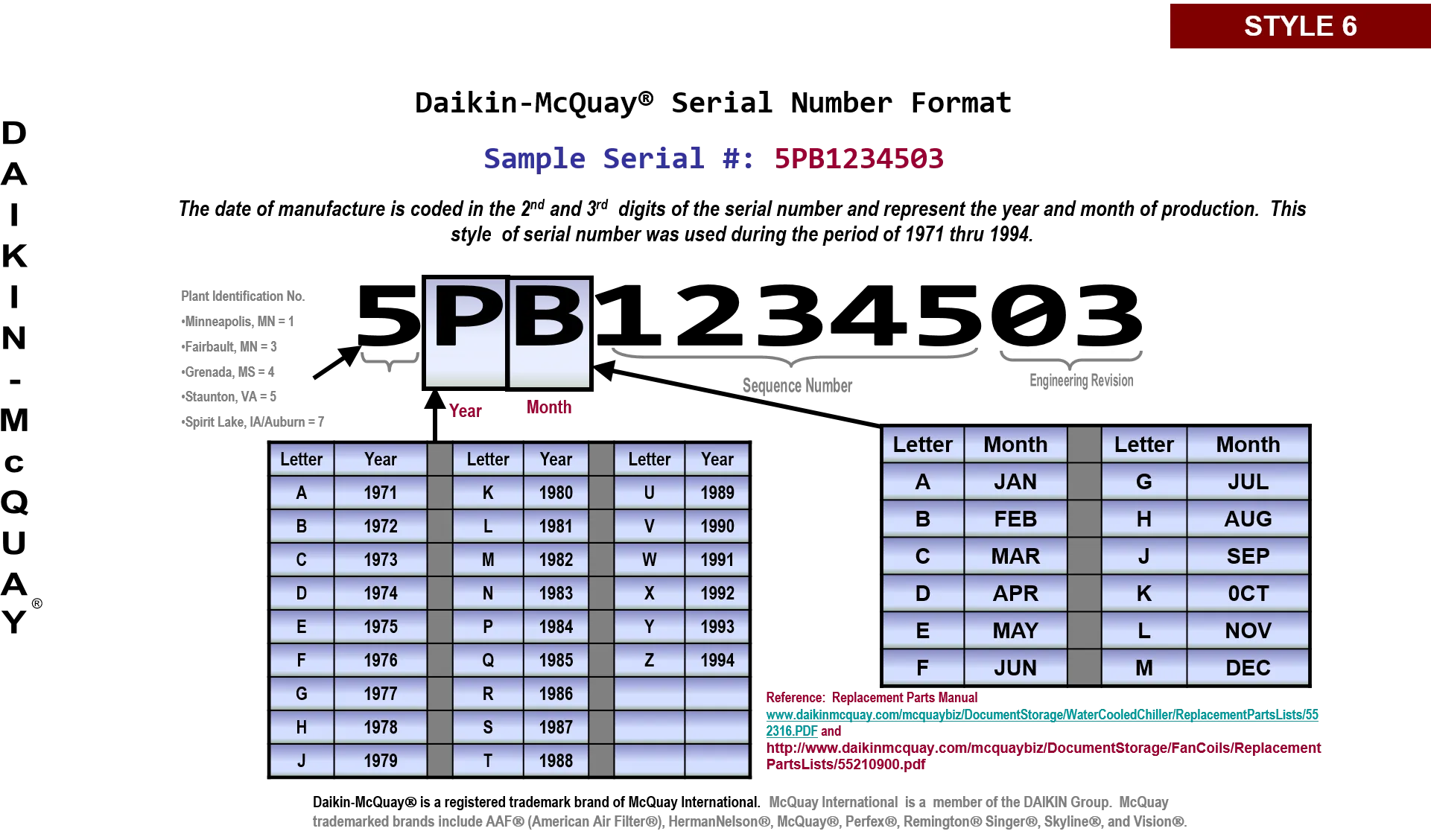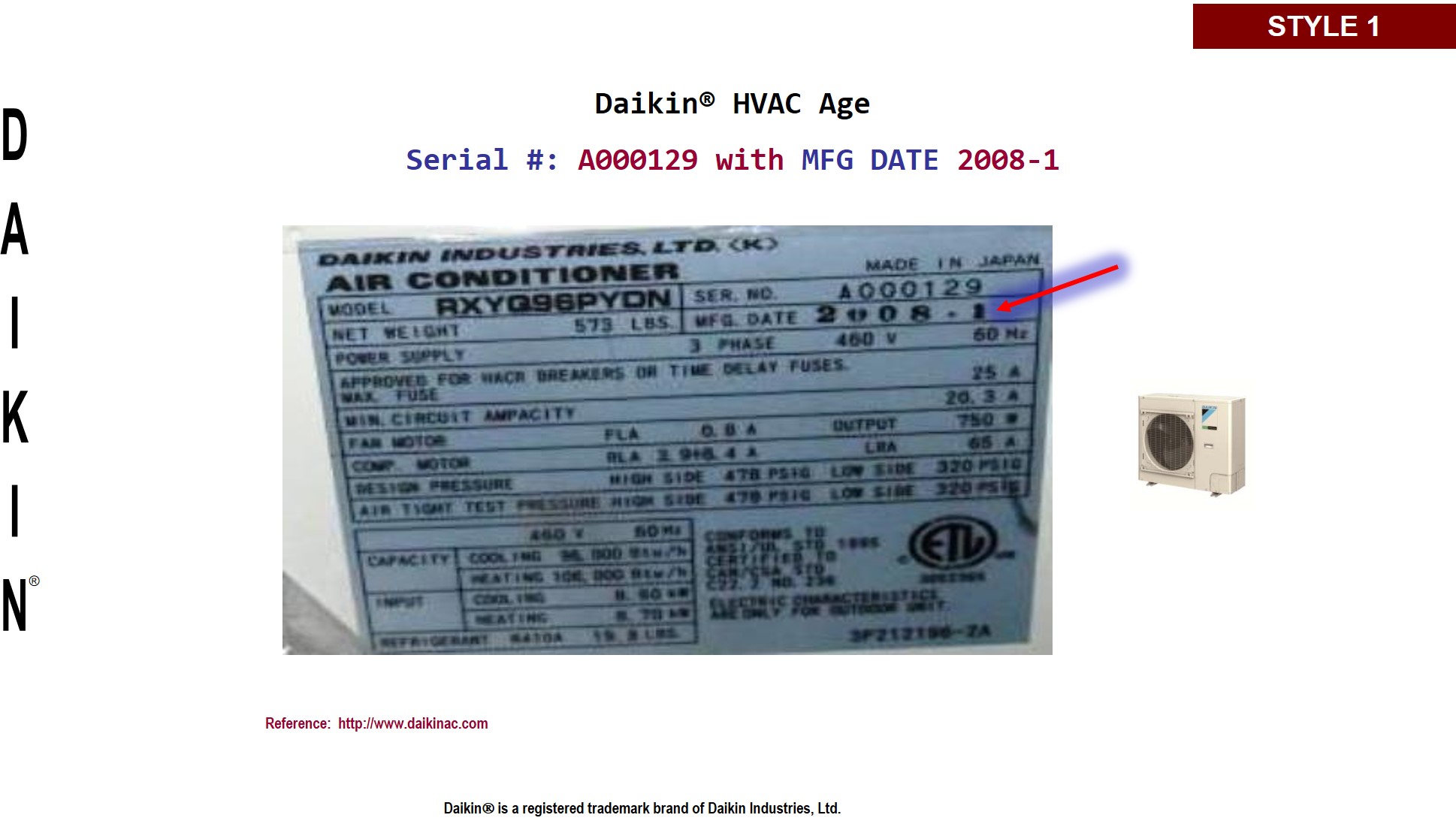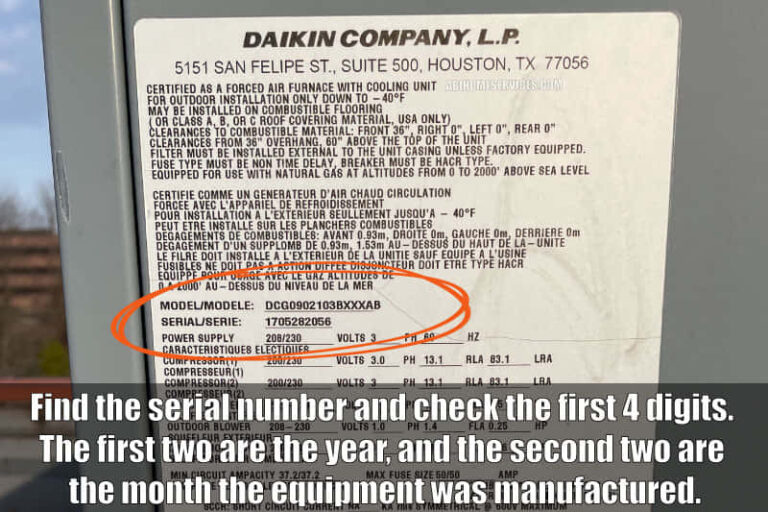Daikin Serial Number Nomenclature

Understanding the seemingly cryptic code on your Daikin HVAC equipment – the serial number – is crucial for homeowners, technicians, and facility managers alike. This alphanumeric string holds the key to unlocking essential information about your system, including its manufacturing date, model specifications, and warranty details. Decoding the Daikin serial number nomenclature allows for accurate part identification, streamlined maintenance, and efficient troubleshooting.
Daikin Serial Number Structure: A Breakdown
While the exact structure can vary slightly depending on the product line and age of the unit, Daikin serial numbers generally follow a consistent pattern. Let's dissect a typical Daikin serial number to understand its components:
Example: Y23C12345
- First Character(s): The initial characters often represent the manufacturing location or factory code. In our example, "Y" might indicate a specific plant. This code is less critical for general users but is vital for Daikin's internal tracking.
- Second and Third Character(s): These digits commonly indicate the year of manufacture. In our example, "23" suggests the unit was manufactured in 2023. However, it's crucial to remember that older Daikin units may use a different year-coding system, sometimes relying on letters or a combination of numbers and letters. Double-checking with Daikin's resources is always recommended for older units.
- Fourth Character: The fourth character often signifies the month of manufacture. Daikin typically employs a numerical system (1-12) or an alphabetical system (A-L, where A=January, B=February, and so on). In our example, "C" would represent March.
- Remaining Digits: The final digits are a sequential number, uniquely identifying the individual unit. This is similar to a vehicle identification number (VIN) and is essential for tracking warranty claims, parts orders, and service history.
Therefore, using our example serial number Y23C12345, we can infer that the Daikin unit was likely manufactured in March 2023 at a specific Daikin factory.
Location of the Serial Number
Finding the serial number is the first step. It's typically located on a nameplate or sticker affixed to the unit. The exact location varies based on the type of equipment:
- Outdoor Condensing Units: Look on the exterior of the unit, often on a side panel or near the electrical access panel.
- Indoor Air Handlers: Check inside the unit's access panel, typically on the side or front.
- Furnaces: The nameplate is usually found inside the blower compartment. Warning: Always disconnect power to the furnace before opening the blower compartment.
- Mini-Split Systems: The serial number might be on the indoor unit's side or back panel, or sometimes concealed behind a removable cover. The outdoor unit will also have its own serial number.
The nameplate will usually display the model number as well. The model number is just as crucial for identifying the system specifications, capacity, and compatible parts. Make sure you record both the serial and model numbers.
Why is the Serial Number Important?
The serial number serves as a critical identifier for several reasons:
- Warranty Claims: The serial number is essential for verifying the warranty status of your Daikin equipment. Without it, processing warranty claims can be significantly delayed or even denied. Daikin (and other manufacturers) use the serial number to track the unit's manufacturing date and link it to the warranty period.
- Parts Identification and Ordering: When ordering replacement parts, providing the correct serial number ensures you receive the compatible components for your specific unit. Using the wrong parts can lead to system inefficiency, damage, or even failure. A qualified HVAC technician will always request the serial number before ordering parts.
- Technical Support and Troubleshooting: When contacting Daikin or a qualified HVAC technician for technical support, the serial number allows them to quickly access information about your unit's specifications, service history, and potential issues.
- Registration and Records: You'll need the serial number when registering your Daikin product online. This registration can provide access to warranty information, product updates, and other valuable resources. Furthermore, keeping a record of your HVAC system's serial number, model number, installation date, and maintenance history helps you track its performance and anticipate future needs.
- Preventing Fraud: In rare cases, stolen or counterfeit HVAC equipment may surface. Verifying the serial number with Daikin can help ensure you are purchasing a genuine product.
Decoding Daikin Model Numbers
While this article focuses on serial numbers, understanding the Daikin model number nomenclature is also beneficial. Model numbers provide information about the unit's type, capacity, efficiency, and features. Like serial numbers, the structure varies, but often includes codes for:
- Unit Type: (e.g., FTXS for a ductless indoor unit, ARUF for an air handler).
- Capacity: Usually expressed in British Thermal Units (BTUs). For example, "18" might indicate an 18,000 BTU unit (1.5 tons).
- Efficiency: Indicated by letters or numbers relating to the SEER (Seasonal Energy Efficiency Ratio) or HSPF (Heating Seasonal Performance Factor) rating. Higher numbers indicate greater efficiency.
- Series: Designating the specific product line (e.g., "LV" for a particular series of air conditioners).
Consulting Daikin's product literature or website is the best way to decipher the precise meaning of each character in the model number.
Real-World Examples and Best Practices
Imagine a homeowner experiencing issues with their Daikin air conditioner. Before calling a technician, they locate the serial number (e.g., X21A12345) on the outdoor unit. When they contact the HVAC company, they provide this serial number, allowing the technician to immediately determine that the unit was manufactured in January 2021. This information helps the technician prepare for the service call, potentially bringing the right parts and tools based on known issues with units manufactured around that time.
For facility managers overseeing a large building with multiple Daikin HVAC systems, maintaining a spreadsheet of serial numbers, model numbers, and installation dates is crucial for efficient maintenance planning and budget forecasting. This information allows for proactive identification of units approaching the end of their lifespan and helps avoid costly emergency repairs.
Best Practices:
- Record Serial and Model Numbers: Keep a record of the serial and model numbers for all your HVAC equipment in a safe and accessible location.
- Register Your Products: Register your Daikin products online to access warranty information and product updates.
- Regular Maintenance: Schedule regular maintenance with a qualified HVAC technician to ensure optimal performance and longevity of your equipment. Provide the serial number to the technician during each service call.
- Consult Daikin Resources: If you are unsure about the meaning of a serial number or model number, consult Daikin's official website or contact their customer support for assistance.
Daikin and Energy Efficiency
Daikin is a well-known brand when it comes to energy-efficient HVAC systems. Understanding the serial number won't tell you directly about the unit's efficiency, but the associated model number will. Look for the SEER rating (for cooling) and HSPF rating (for heating in heat pumps). Higher numbers mean greater energy efficiency, translating to lower energy bills over the system's lifespan.
For instance, a Daikin air conditioner with a SEER rating of 20 will consume less energy than a unit with a SEER rating of 14, providing significant savings over time. While the initial cost of a higher-efficiency unit may be greater, the long-term energy savings can often offset the difference.
Lifespan and Replacement Considerations
The average lifespan of a Daikin HVAC system typically ranges from 15 to 20 years, depending on factors such as usage, maintenance, and climate. Regularly checking the serial number and comparing it to the installation date can help you estimate the remaining lifespan of your equipment. As units approach the end of their lifespan, their efficiency may decline, and the likelihood of breakdowns increases.
When considering replacing your HVAC system, factor in the energy efficiency of newer models and the potential savings on your energy bills. Newer Daikin systems often incorporate advanced technologies, such as variable-speed compressors and smart controls, which can significantly improve energy efficiency and comfort.
Understanding the Daikin serial number nomenclature, combined with proactive maintenance and informed replacement decisions, will allow you to maximize the performance, efficiency, and lifespan of your HVAC investment.










